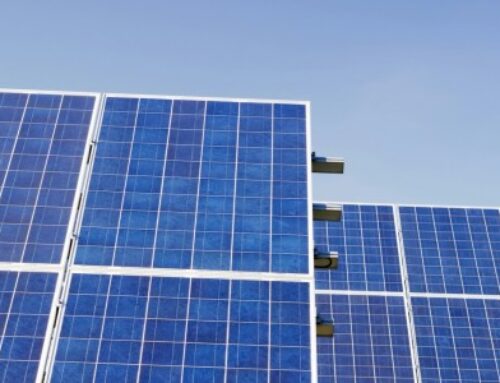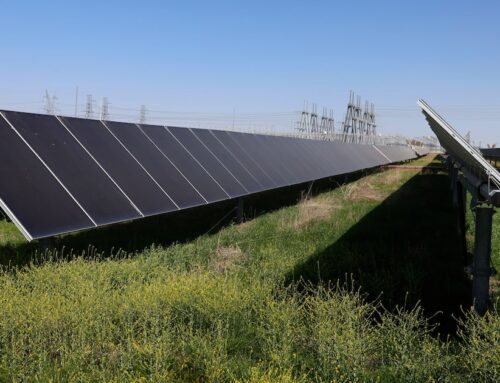With Proposed Budget Bill, House Crushes Clean Energy—And Risks Creating an Actual Energy
June 9, 2025
House Republicans, as part of a sprawling budget reconciliation package, have proposed to slash policies supporting the deployment of clean electricity resources—and in so doing, threaten to turn a tense moment for the power sector into an outright emergency.
As the Senate now takes its turn to debate and shape the bill, it’s critical that policymakers seriously contend with the threats to the electricity system tucked into the current package and ensure this catastrophe-in-waiting does not come to pass. Otherwise, the power sector will be sent spiraling, and people and businesses will be forced to bear the costs.
The House proposal would lead to surging electricity bills, increased threat of power outages and energy shortfalls, hundreds of thousands of jobs lost, hundreds of billions of dollars of investments abandoned, loss of global leadership on critical emerging energy technologies, and—not least—a major increase in emissions and a major regression in the shift toward a clean economy.
Moreover, the massive increase in the deficit resulting from the broader bill would exacerbate an already challenging investment environment, further chilling deployment of electricity infrastructure exactly when we need it most.
All these costs, and for what—scoring ideological points, further enriching corporations and the wealthy, and securing short-cuts for fossil fuels?
No member of Congress should want to own this entirely avoidable trainwreck—but if they pass this bill, they will.
Here’s the current situation in the power sector:
- Electricity demand is surging, at the same time that…
- Uneconomic coal plants are retiring, all while…
- Outdated grid infrastructure is faltering in the face of extreme weather and climate-exacerbated events.
The upshot is a grid on the precipice, with costs rising, reliability falling, and opportunities predicated on access to electricity—from vehicle electrification to new manufacturing facilities to data centers—increasingly placed at risk.
The good news is there’s a clear path to a cheaper, cleaner, and more resilient side, but the path is narrow, and the costs of straying are high. Staying the course demands exceedingly careful navigation by decisionmakers.
Over the past few years, lawmakers in Congress have done just that by passing new policies intended to get at multiple sides of the complex tangle: spurring the deployment of, and access to, new sources of clean electricity generation; cultivating related domestic manufacturing, supply chains, and work forces; encouraging the uptake of energy efficiency and rooftop solar; and facilitating tactical investments in emerging energy technologies and the buildout of critical grid infrastructure.
These policies have been enormously successful.
They have supercharged renewables and storage deployment, the least-cost electricity resources and the quickest to deploy. They have driven hundreds of billions of dollars of investments, and hundreds of thousands of jobs, in communities across the country. They are chipping away at the cost of electricity, while at the same time driving more local uptake of rooftop solar and energy efficiency by homes, towns, schools, and hospitals. And, most critically, with clearly established timelines and intentions, they have fostered market certainty, a foundational requirement for multi-billion dollar, multi-decade investments.
And now, in this House-passed bill, these policies are under full-out attack. Not adjusted to reflect a rigorous evaluation of whether or how to ensure these policies best meet the moment, but instead, incomprehensibly, just a slashing of the whole solution set. This includes:
- Repealing the clean electricity tax credits (Sections 45Y and 48E of the tax code), designed to increase deployment of clean electricity resources.
- Accelerating the phaseout of the advanced manufacturing tax credits (Section 45X), intended to spur the ramp-up of domestic manufacturing of key technologies associated with the clean economy—including, critically, wind turbines, solar panels, and batteries.
- Cutting incentives that ease electricity demand by encouraging investments in energy efficiency and deployment of rooftop solar (Sections 25C, 25D, and 45L).
- Inserting sourcing restrictions and limiting financing mechanisms that fully undermine the incentives during the brief period they still remain.
- Clawing back investments intended to drive technological innovation, tackle local pollution, lower energy costs for low-income communities, and improve and expand grid infrastructure.
Entirely unsurprisingly, attacking numerous angles of support for rapidly deploying new sources of electricity generation while cutting incentives to increase energy efficiency and uptake of rooftop solar yields pain on the other side. For example, if this bill is passed:
- Electricity prices will spike for families and businesses. By reducing deployment of renewables by 20 percent or more, electricity prices would jump on the order of 10 percent, with some states seeing prices increasing even higher, like Maine at 20 percent and Nebraska at 15 percent. Methane gas prices would also increase due to the subsequent increases in fossil gas demand and exports. These increases would be further exacerbated by the parallel proposed cuts to energy efficiency and rooftop solar programs.
- Hundreds of thousands of jobs will be lost. The solar industry alone anticipates 330,000 lost jobs by 2028, with hundreds of thousands of more jobs lost across the broader clean economy. In Georgia, right now, there are 23,000 jobs on the line; in Texas, 15,000; in North Carolina, nearly 10,000—and that doesn’t even factor in all the additional jobs stemming from new economic investments that could now never be proposed.
- Hundreds of billions of dollars of investments will be abandoned. Since enactment of the policies now under attack, more than $320 billion have been invested in related manufacturing, clean electricity, and industrial facilities, while more than $520 billion in proposed investments, across more than 2,200 facilities, is now at risk. Three-quarters of these investments are slated for Republican-held districts. The threat is real: since the start of the Trump administration, more than $14 billion in projects have already been delayed or cancelled.
- Broader opportunities for economic growth will be at risk. The global economy is unequivocally cleaning up, meaning enormous opportunities for leadership in core and emerging technologies. US researchers and companies are poised to lead; however, this bill would pull the rug out from under them. Moreover, multiple major opportunities for economic growth, from new manufacturing facilities to AI, are only possible if electricity, often specifically clean electricity, is readily accessible—and that requires making it as easy as possible to deploy new clean electricity resources. But this proposal would do the exact opposite, making new generating resources far harder to access and far costlier to deploy.
- The clean energy transition will be curtailed. Deployment of clean energy resources would be dramatically reduced under the House proposal, with astounding estimated capacity reductions of 57 to 72 percent over the next 10 years. Alongside driving electricity prices higher and robbing communities of major new investments, it also risks severely undermining achievement of the nation’s climate targets—a major stalling out in the face of urgently needed progress.
This is a staggering price to pay no matter the motivation; when it results from scoring ideological points, further enriching corporations and the wealthy, and securing short-cuts for fossil fuels, bill passage becomes unfathomable, and unforgivable.
If these policy changes were to land on their own, it would be a massive setback for the power sector—and again, at the exact moment when the power sector can least afford it.
But this budget bill would not land in isolation.
Instead, it would come down in the midst of an onslaught of actions by the Trump administration that, on the first day in office and every day since, has attempted to strike down clean energy while boosting fossil fuels. Repeatedly, often entirely illegally, and fully unmoored from what would actually help the energy system, President Trump and his administration have gone to bat for their team of fossil fuel donors while abandoning families and businesses.
Research and innovation backing? Cut. Deployment support? Cut. Permits for renewable energy projects? Cut. Federal agency staffing and capacity? Cut. Initiatives to lower costs? Cut. Incentives to encourage uptake of residential, commercial, and industrial energy efficiency? Cut. Consideration of impacts of large new loads? Cut. Standards to ensure accountability for pollution burdens? Cut. Free trade? Cut. International collaborations? Cut. Faith in government contracts? Cut. Market certainty? Vividly, unabashedly, catastrophically: cut.
Again, and again, and again, the Trump administration’s actions are exacerbating power sector challenges while decimating power sector solutions.
And in that context, this astonishingly harmful budget bill becomes a full-on crisis.
On his first day in office, President Trump declared an energy emergency. The declaration was obviously issued in bad faith, all to justify extreme policy interventions that boost fossil fuels and stifle renewables.
But the House budget bill threatens to turn an idle threat into a real and true emergency. Worse, it would do so despite policymakers knowing full and well the implications, and full and well the costs—not least because stakeholders up and down the board have been unequivocally opposed, from consumer groups, to utilities, to big tech companies, to manufacturers, to climate interests, and more.
As Senators revise and reshape the sprawling budget bill, they will be confronting an extensive set of urgent and weighty issues deserving of careful, considered resolution. Fixes to the House bill’s pending energy catastrophe must be among them. That requires making critical changes to the House proposal, including by:
- Reinstating tax incentives tied to the manufacturing, deployment, and use of clean technologies, ridding the bill of the House’s radical, unworkable attacks;
- Undoing claw-backs of grants and loans intended to drive innovative pollution reductions from some of the stickiest—and dirtiest—corners of the energy transition, including in communities suffering disproportionate pollution harms; and
- Reversing costly short-cuts and plus-ups for the production, transport, export, and use of fossil fuels.
The House budget proposal was an abject disaster. The Senate must make it right.
Search
RECENT PRESS RELEASES
Related Post



